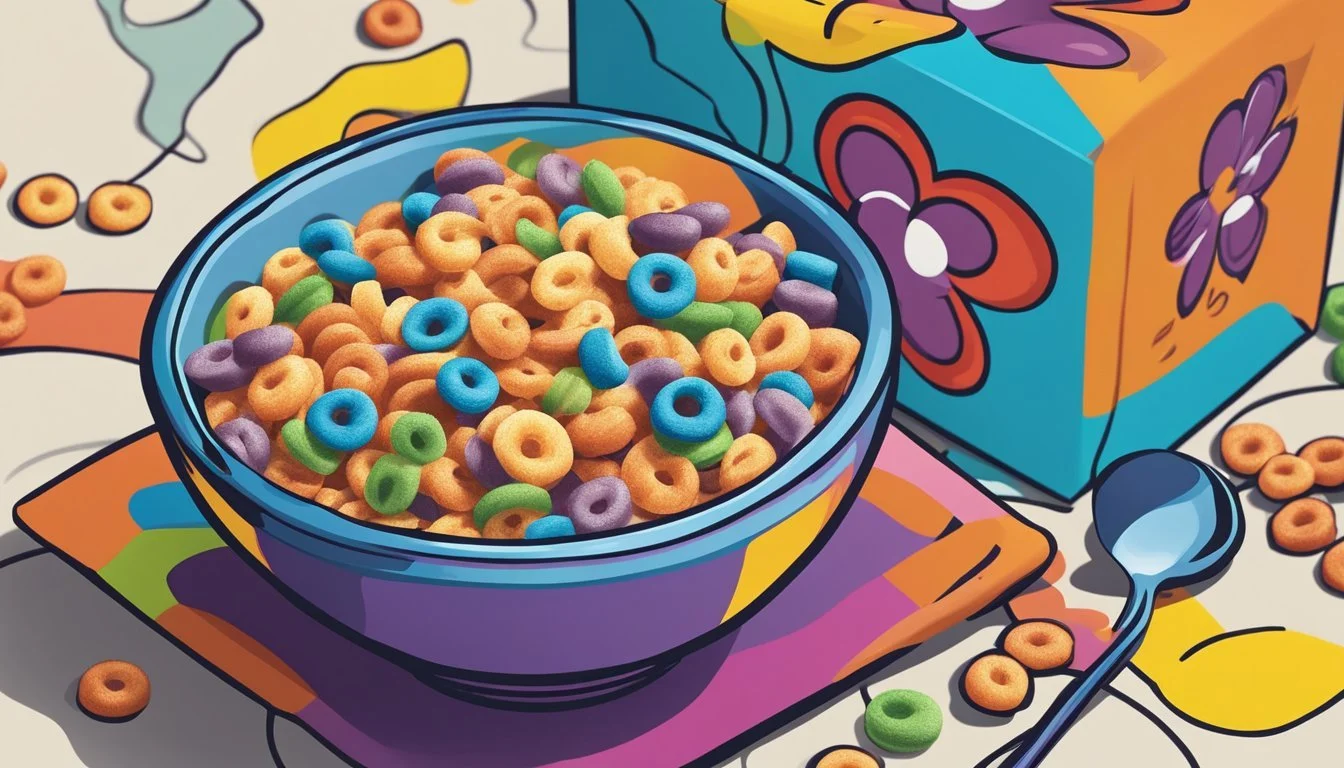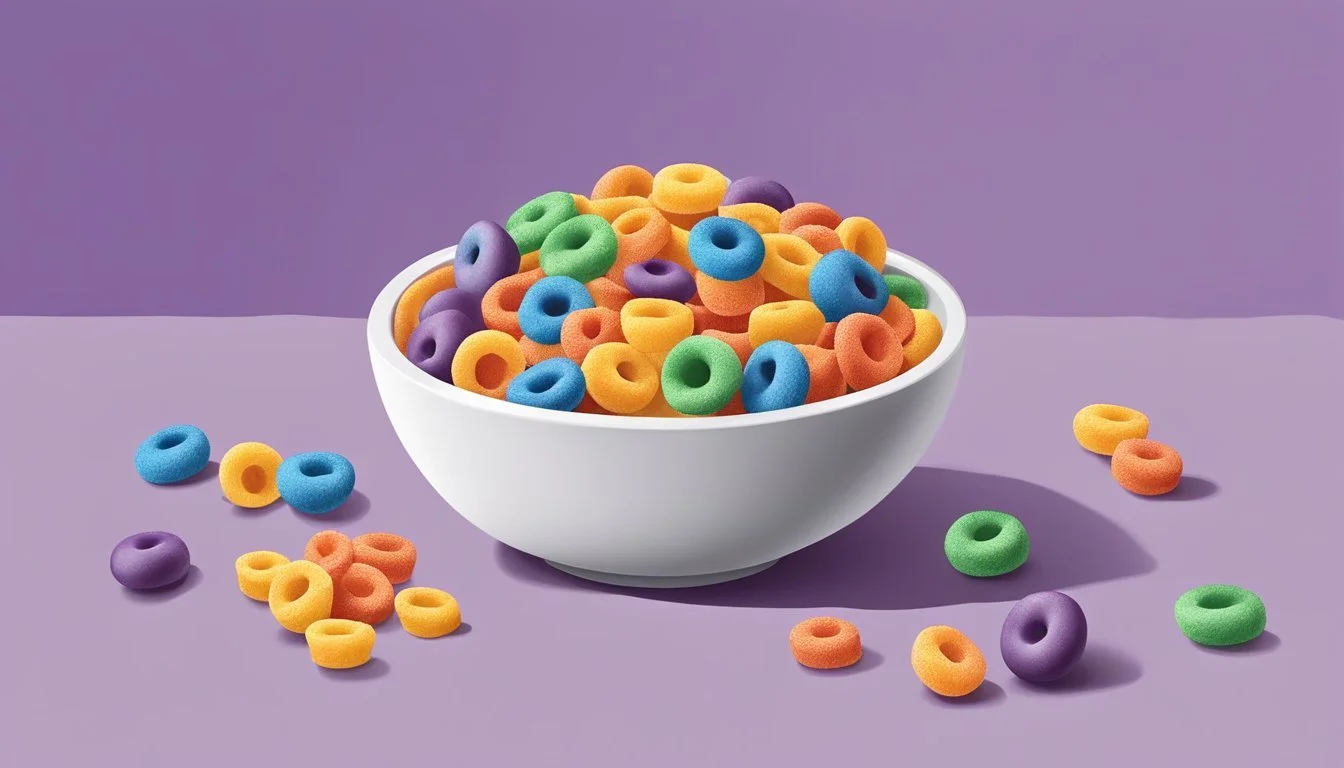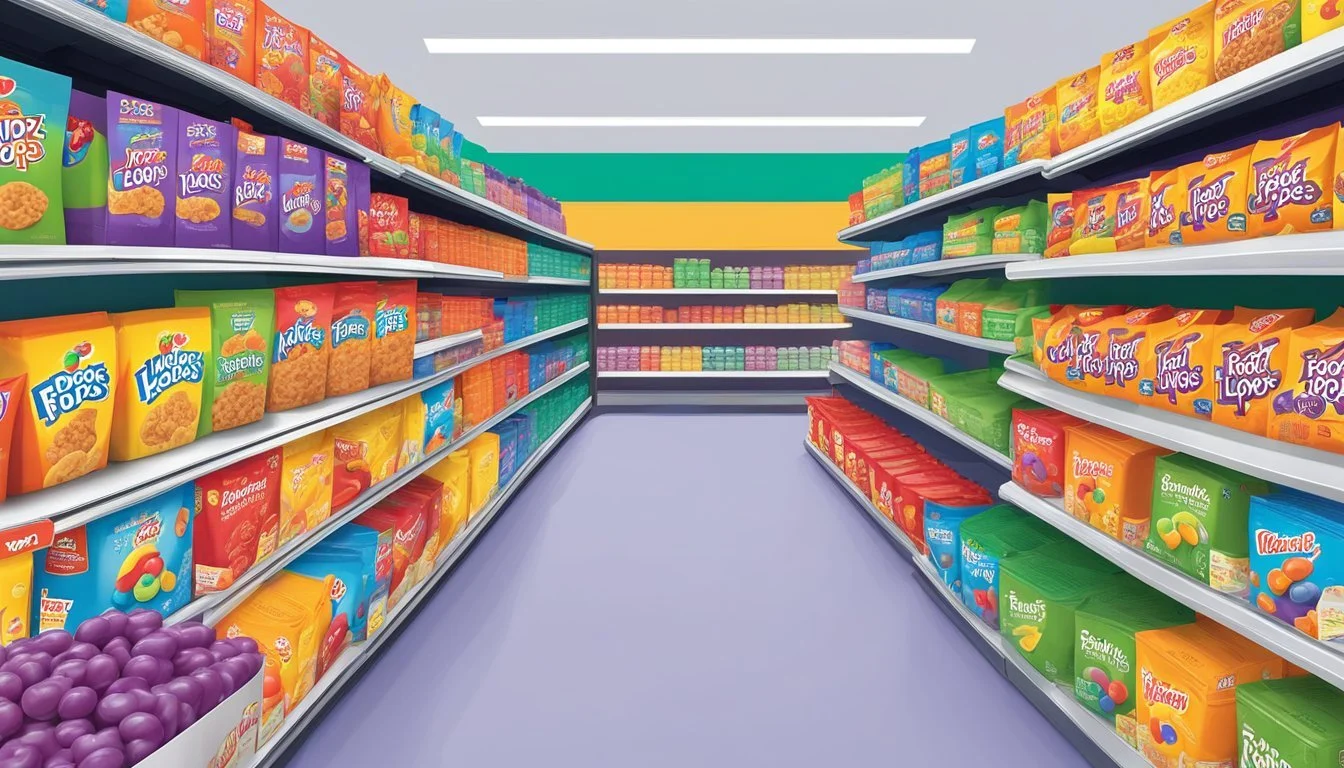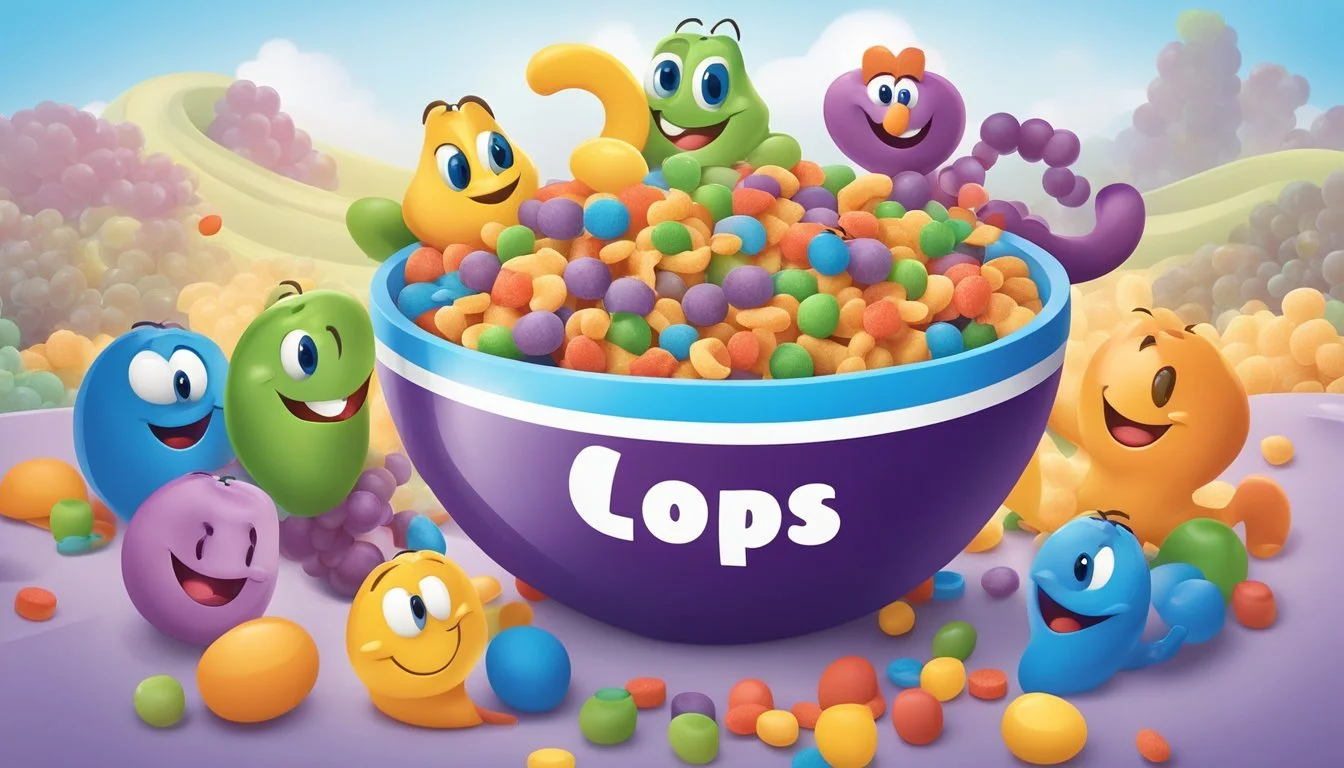Kellogg's Froot Loops vs Post Grapenut Flakes
A Comprehensive Comparison
This Article is Part of Our Breakfast Cereal Guide with Details on Kellogg's Froot Loops Nutrition and Post GrapevsNut Flakes Nutrition
Comparing breakfast cereals can often feel like navigating a labyrinth of nutritional information. When it comes to Kellogg's Froot Loops vs Post Grape-Nuts Flakes, one offers a burst of colorful fun while the other provides a more traditional, nutrient-dense option. For those seeking a healthier start to the day, Post Grape-Nuts Flakes emerges as the better choice with its lower sugar content and higher fiber levels.
Kellogg's Froot Loops have long been a favorite among children for their sweet taste and vibrant appearance. Froot Loops contain 12 grams of sugar per serving, making them a treat rather than a staple for a balanced breakfast. In contrast, Post Grape-Nuts Flakes present themselves as a more wholesome option, offering more fiber and protein, essential for sustained energy throughout the morning.
Both cereals have their own appeal, but their nutritional profiles cater to different needs and preferences. For those prioritizing a high-sugar treat, Froot Loops fit the bill. On the other hand, individuals searching for a nourishing breakfast solution will find that Post Grape-Nuts Flakes provide more health benefits and a more stable energy source.
The History of Cereal Brands
Cereal brands have a fascinating history, shaped by innovation and competition. The rivalry between Kellogg's and Post exemplifies this dynamic evolution.
The Legacy of Kellogg's
Kellogg's, founded by Will Keith Kellogg in 1906, revolutionized the breakfast landscape. Kellogg initially worked with his brother, Dr. John Harvey Kellogg, at a sanitarium where they developed a flaked cereal to provide a healthy, easily digestible breakfast option.
Froot Loops, introduced in 1959, became a staple in the American breakfast market. Known for its vibrant colors and fruity flavors, Froot Loops is easily recognizable by its mascot, Toucan Sam. The cereal's unique marketing and flavor profile targeted younger audiences, making it a household favorite.
Over the years, Kellogg's expanded its portfolio to include iconic brands like Rice Krispies, Frosted Flakes, and Special K. The company's focus on innovation and brand loyalty solidified its position as a leader in the cereal industry.
The Evolution of Post
Post Cereals, established by Charles William Post in 1895, also played a pivotal role in cereal history. Post was inspired after visiting the Kellogg brothers' sanitarium and sought to create his own cereal empire. He launched Grape-Nuts in 1897, a cereal made from wheat and barley.
Grape-Nuts quickly gained popularity due to its claimed health benefits and distinctive, crunchy texture. It was marketed as a nutritious option suitable for all ages. Post Cereals continued to grow, introducing other popular brands such as Honey Bunches of Oats and Fruity Pebbles.
The rivalry between Post and Kellogg's fueled significant advancements in cereal production and marketing. Both companies innovated continuously, striving to capture consumer interest and meet changing dietary trends.
Nutritional Value Comparison
When comparing Kellogg's Froot Loops and Post Grape-Nut Flakes, key nutritional aspects such as caloric and sugar content, vitamin and mineral fortification, and protein and fiber content are vital to consider. These factors play a significant role in determining which cereal may better align with dietary goals.
Caloric and Sugar Content
Kellogg's Froot Loops contain around 110 calories per serving. They are notably higher in sugar, with approximately 12 grams per serving. This high sugar content can impact daily caloric intake and increase the risk of metabolic issues if consumed excessively.
Post Grape-Nut Flakes offer a healthier caloric profile with approximately 200 calories per serving. They contain significantly less sugar, at about 5 grams per serving. Lower sugar content makes Grape-Nut Flakes a preferable option for those monitoring their sugar and caloric intake closely.
Nutrient Froot Loops Grape-Nut Flakes Calories 110 200 Sugar (g) 12 5
Vitamin and Mineral Fortification
Froot Loops are fortified with several vitamins and minerals. They typically provide relatively high amounts of Vitamin C, Vitamin B6, and Vitamin B12. For example, a single serving often covers a significant portion of the daily recommended intake for these vitamins.
Grape-Nut Flakes also emphasize fortification but include a broader spectrum of nutrients. They are rich in Iron, Calcium, and Zinc, contributing substantially to daily nutritional needs. Additionally, Grape-Nut Flakes often contain good levels of Vitamin D and Vitamin B1.
Both cereals aim to enhance their nutritional profiles through fortification, but Grape-Nut Flakes offer a more balanced array of essential vitamins and minerals.
Vitamin/Mineral Froot Loops Grape-Nut Flakes Vitamin C High Moderate Vitamin B6 High Moderate Vitamin B12 High Moderate Iron Moderate High Calcium Moderate High Zinc Moderate High Vitamin D Moderate High Vitamin B1 Moderate High
Protein and Fiber Content
Froot Loops contain about 1 gram of protein and 3 grams of fiber per serving. The fiber content is moderate, but the low protein level may not be sufficient to meet daily protein needs, especially for those relying on cereal as a primary breakfast food.
Grape-Nut Flakes excel in both protein and fiber content. They offer approximately 6 grams of protein and 7 grams of fiber per serving. This higher fiber and protein content promotes better satiety and supports digestive health, making Grape-Nut Flakes an attractive option for those aiming to increase their intake of these nutrients.
Nutrient Froot Loops Grape-Nut Flakes Protein (g) 1 6 Fiber (g) 3 7
In conclusion, while both cereals have their benefits and drawbacks, Grape-Nut Flakes generally offer a more favorable nutritional profile in terms of sugar, protein, fiber, vitamins, and minerals.
Health and Diet Considerations
When comparing Kellogg's Froot Loops to Post Grape-Nuts Flakes, key health and diet considerations include their nutritional contributions to a low-calorie diet, the management of macronutrient intake, and their impact on the glycemic index. Each aspect addresses specific health needs and lifestyle choices.
Cereals in a Low-Calorie Diet
For those on a low-calorie diet, the caloric content of breakfast cereals is crucial. Kellogg's Froot Loops contain approximately 110 calories per serving, with 3 grams of fiber.
Post Grape-Nuts Flakes provide around 120 calories per serving, but offer 5 grams of fiber. Both options have low amounts of saturated fat and cholesterol, making them suitable for low-calorie diets, yet Grape-Nuts Flakes may be slightly more advantageous due to higher fiber content.
Managing Macronutrient Intake
Macronutrient balance is essential for maintaining a healthy diet. Kellogg's Froot Loops have 12 grams of sugar and 2 grams of protein per serving. They also include 2% of the daily value (DV) of monounsaturated fat and 2 grams of polyunsaturated fat.
In contrast, Post Grape-Nuts Flakes contain 6 grams of protein and 1 gram of sugar per serving. They offer 3 grams of total fat with a minimal amount of unsaturated fats. Those prioritizing lower sugar and higher protein intake might find Grape-Nuts Flakes a better fit.
Cereals and the Glycemic Index
The glycemic index (GI) measures how rapidly foods raise blood glucose levels. Kellogg's Froot Loops have a relatively high GI due to their sugar content, which can lead to quicker spikes in blood sugar.
Post Grape-Nuts Flakes, with their lower sugar content and higher fiber, have a lower GI, leading to a slower, more controlled blood glucose response. Choosing a cereal with a lower GI can be beneficial for those managing blood sugar levels, including individuals with diabetes.
In essence, while both cereals provide essential nutrients, Post Grape-Nuts Flakes tend to offer more fiber and protein with a lower sugar content and lower glycemic impact, making them a potentially healthier option for those mindful of these specific dietary needs.
Ingredients and Taste Profile
This section contrasts Kellogg's Froot Loops with Post Grape-Nuts Flakes in terms of primary cereal grains, flavor enhancers, and the texture and mouthfeel experienced by consumers.
Cereal Grains as Primary Ingredients
Kellogg's Froot Loops mainly use corn flour blend and whole grain oat flour as their primary ingredients. These components contribute to a sweeter flavor.
Post Grape-Nuts Flakes, on the other hand, utilize whole grain wheat flour and malted barley flour, adding a richer, denser taste.
Both cereals list whole grains prominently, but the type of grain impacts flavor and nutritional profile significantly.
Flavor Enhancers and Additives
Froot Loops are known for their vibrant colors and fruity taste, achieved primarily through added sugar, artificial flavors, and food colorings such as Red 40, Yellow 5, and Blue 1. These ingredients are synthesized to give each loop a distinct and appealing flavor.
Post Grape-Nuts Flakes take a different approach, relying less on artificial additives and more on barley malt extract and salt to enhance flavor. This results in a more natural taste, appealing to those who prefer less sweetened cereals.
The Role of Texture and Mouthfeel
In terms of texture, Froot Loops provide a crunchy experience due to their coating of sugar and coloring agents, contributing to a sweeter sensation upon the first bite.
Grape-Nuts Flakes deliver a denser and more robust texture. The whole grain wheat and barley combination ensures a hearty mouthfeel that can stand up well to milk, staying crunchy longer.
Both cereals aim for a distinct eating experience, but their differences in texture can significantly affect consumer preference.
Market Placement and Pricing
Kellogg's and Post have distinct strategies when it comes to market positioning and pricing for their cereals, Froot Loops and Grape-Nuts Flakes, respectively. Understanding these differences can help consumers make informed choices.
Cereal Brand Positioning
Kellogg's Froot Loops is positioned as a fun, colorful cereal that primarily appeals to children. Marketing efforts highlight its playful mascot, Toucan Sam, and vibrant loops. It's also marketed as a quick, sweet breakfast option that's both flavorful and convenient.
Post's Grape-Nuts Flakes caters to a different demographic. This cereal targets health-conscious adults seeking a nutritious, wholesome breakfast. Marketing emphasizes its high fiber content and potential health benefits, positioning it as a more serious, nutritious choice compared to sugary options.
Assessing the Price Value
The price of Kellogg's Froot Loops generally ranges between $3.50 to $4.50 per box, depending on the size and retailer. Its pricing strategy is competitive, focusing on volume sales and promotions to maintain a strong market presence.
On the other hand, Post's Grape-Nuts Flakes is typically priced higher, ranging from $4.00 to $5.50 per box. This reflects a premium positioning aligned with its health-centric appeal. The higher price point is justified by its nutritional value, making it appealing to consumers willing to invest in healthier options.
Different promotional strategies are also evident. Kellogg's frequently uses discounts and family-sized packaging to attract buyers, whereas Post often leverages health claims and endorsements to maintain its pricing structure.
Consumer Perceptions and Preferences
When choosing between Kellogg's Froot Loops and Post Grape-Nuts Flakes, consumers often rely on brand loyalty and health trends to guide their decisions.
Brand Loyalty and Consumer Choices
Brand loyalty plays a significant role in cereal purchases. Kellogg's Froot Loops enjoy a strong following, particularly among consumers who grew up with the brand. The vibrant colors and fun shapes appeal to children, creating early brand connections.
Post Grape-Nuts Flakes, on the other hand, attract a different demographic. Known for being a healthy, plain option, they resonate with adults focused on nutritional benefits. While Froot Loops emphasize enjoyment and nostalgia, Grape-Nuts build trust through decades of consistency and health benefits.
Both brands use distinctive marketing strategies. Kellogg's focuses on family-oriented marketing. Meanwhile, Post targets health-conscious consumers. This distinction influences how each brand is perceived and chosen by different consumer segments.
Responding to Health Trends
As health trends shift, consumer preferences do too. Parents are increasingly seeking healthier options for their children. General Mills' Cheerios, seen as a healthier choice, are often a competitor in this regard.
Kellogg's Froot Loops, while popular, face scrutiny for high sugar content. Kellogg's has attempted to address these concerns by promoting smaller portion sizes and adding vitamins and minerals.
Conversely, Post Grape-Nuts Flakes naturally align with health trends. Low in sugar, high in fiber, and marketed as heart-healthy, they cater to an audience prioritizing wellness.
These dynamics shape consumer perceptions and influence decisions on what to include in their daily diets.
Environmental and Ethical Practices
Kellogg's and Post have both taken concrete steps to address their environmental and ethical responsibilities. Their efforts focus on sustainable sourcing and corporate responsibility.
Sourcing and Sustainability
Kellogg's emphasizes sourcing ingredients sustainably. They aim to responsibly source 100% of their top 10 ingredients, which includes corn and wheat, by 2030. Initiatives include water-efficient practices and supporting regenerative agriculture.
Post also prioritizes sustainable sourcing. They commit to ethical sourcing for key ingredients such as grains and nuts. Their focus is on minimizing environmental impacts and ensuring sustainable supply chains through rigorous supplier standards.
These efforts from both companies highlight their dedication to sustainability.
Corporate Responsibility
Kellogg's engages in numerous corporate responsibility initiatives. They have set ambitious goals to reduce greenhouse gas emissions by 65% by 2050. Their programs also include reducing food waste and supporting food security in underserved communities.
Post focuses on corporate responsibility through efforts like reducing packaging waste and implementing energy-efficient practices. They collaborate with communities to improve food access and nutrition education.
Both companies align their business practices with social and environmental stewardship, showcasing their commitment to corporate ethical standards.
Conclusion
When comparing Kellogg's Froot Loops and Post Grape-Nuts Flakes as breakfast cereals, several key differences emerge that may influence one's choice.
Nutritional Content:
Froot Loops contain more sugars and artificial colors, which may be a concern for those monitoring their sugar intake.
Grape-Nuts Flakes are higher in fiber and essential vitamins, making them potentially better for digestion and nutrient absorption.
Taste and Texture:
Froot Loops are known for their fruity flavor and colorful appearance, appealing to children and those who enjoy sweet cereals.
Grape-Nuts Flakes offer a more neutral taste and a crunchier texture, preferred by those who enjoy a heartier breakfast option.
Marketing and Price:
Froot Loops are often marketed towards children and come in various promotions and packages.
Grape-Nuts Flakes tend to be marketed more towards health-conscious adults looking for a nutritious start to their day.
Environmental Considerations:
Both brands are produced by large companies with significant resources, though they might have varying commitments to sustainability practices.
Personal Preferences:
Choosing between Froot Loops and Grape-Nuts Flakes often comes down to personal dietary needs and taste preferences.
In essence, each cereal offers unique benefits and characteristics suitable for different audiences and dietary goals.
More on Kellogg's Froot Loops
Cinnamon Toast Crunch vs Kellogg's Froot Loops: Which is better?
French Toast Crunch vs Kellogg's Froot Loops: Which is better?
Honey Nut Cheerios vs Kellogg's Froot Loops: Which is better?
Kellogg's Apple Jacks vs Kellogg's Froot Loops: Which is better?
Kellogg's Froot Loops vs Post Raisin Bran Cereal: Which is better?
More on Post Grapenut Flakes
Cinnamon Toast Crunch vs Post GrapevsNut Flakes: Which is better?
French Toast Crunch vs Post GrapevsNut Flakes: Which is better?
Honey Nut Cheerios vs Post GrapevsNut Flakes: Which is better?
Kellogg's Apple Jacks vs Post GrapevsNut Flakes: Which is better?
Post GrapevsNut Flakes vs Post Raisin Bran Cereal: Which is better?









